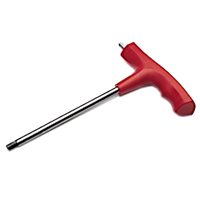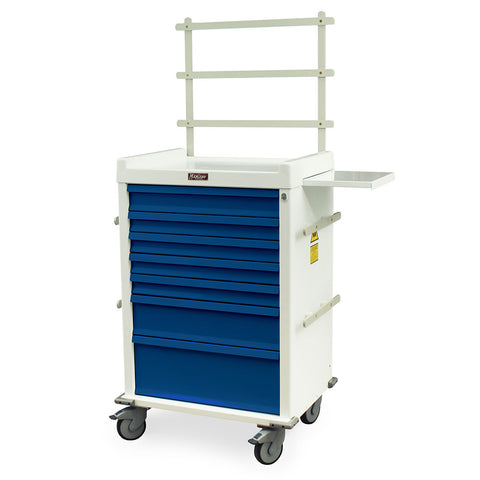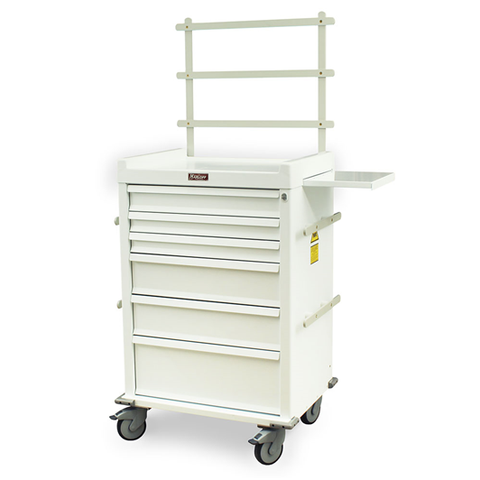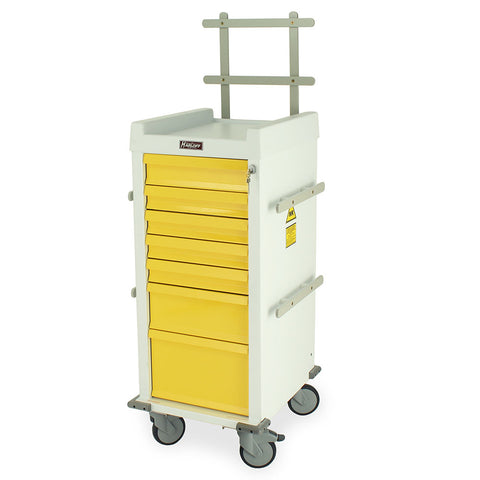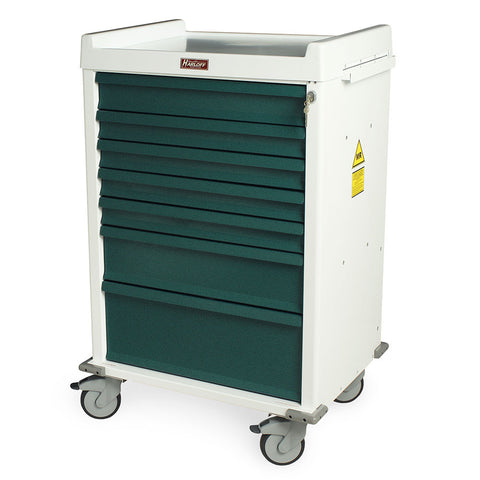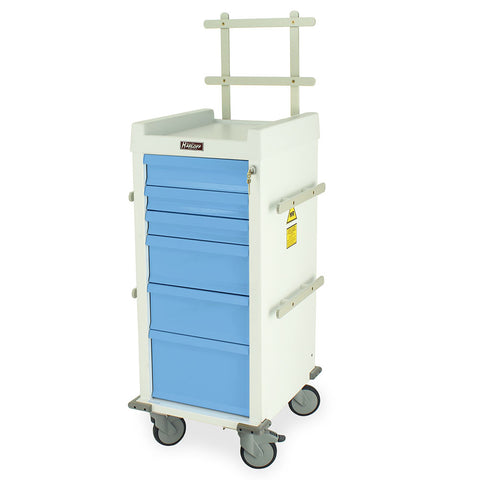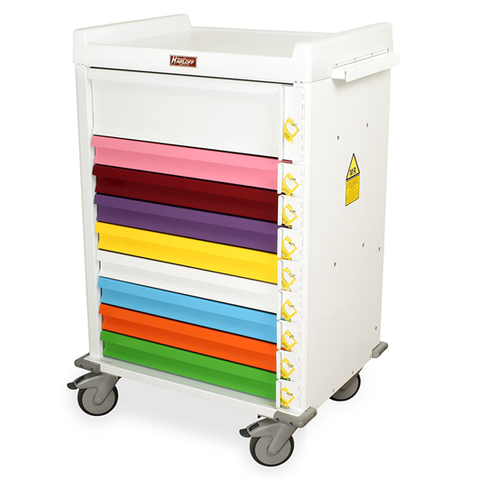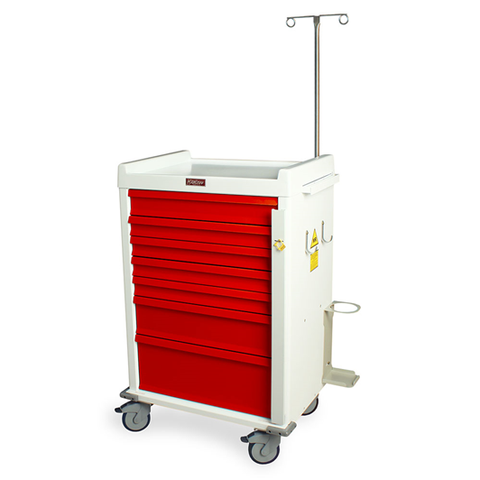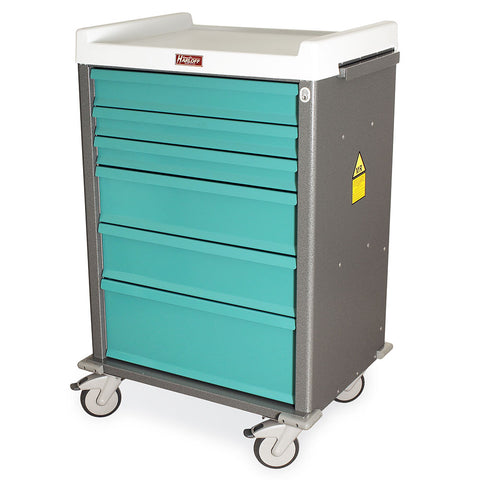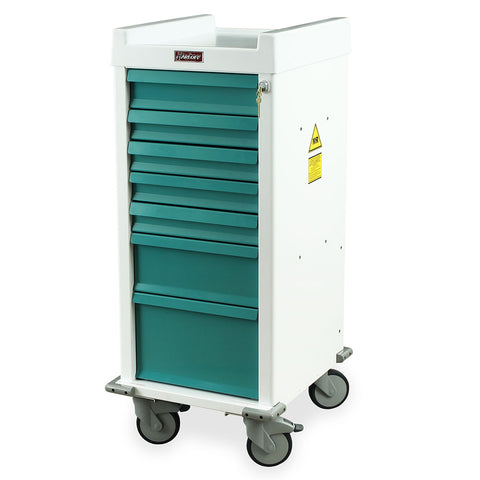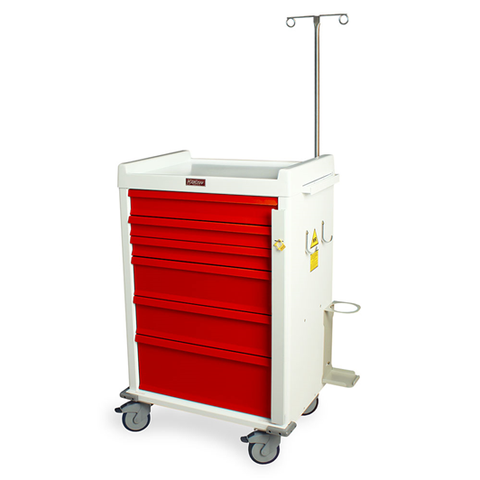Patient safety is the top priority in MRI suites. Accidents during patient transfers can lead to serious injuries, MRI downtime, and costly equipment damage. This guide explores how hospitals can prevent accidents by using MRIMed MR Conditional wheelchairs, stretchers, and MR Safe accessories, implementing staff training, and optimizing workflows.
Understanding MRI Suite Hazards
The Risks of Magnetic Fields and Projectiles
MRI scanners produce strong static magnetic fields that can turn ferromagnetic objects into projectiles, posing severe risks to patients and staff. Even small metallic items like oxygen regulators, pens, or IV poles can become dangerous if they enter the MRI environment. MRIMed MR Conditional devices, including wheelchairs and stretchers, are tested to withstand these fields safely, minimizing hazards.
RF Heating and Device Interference
MRI scanners use radiofrequency (RF) energy to generate images. Ferromagnetic devices or improperly designed equipment can heat up, causing thermal injuries to patients. MR Conditional devices from MRIMed are designed and tested to prevent RF-induced heating and avoid interference with image quality, ensuring safe and efficient imaging workflows.
Common Patient and Staff Injuries
Without proper equipment and procedures, patients may suffer from falls, skin abrasions, or strain during transfers. Staff can experience musculoskeletal injuries from lifting or pushing heavy non-magnetic equipment. Implementing MR Safe transfer aids and MR Conditional devices significantly reduces these risks.
The Importance of MR Conditional Equipment
MR Conditional Stretchers for Safe Patient Movement
MRIMed stretchers, like the Non-Ferrous Height Adjustable Stretcher, allow patients to be transported lying flat safely. Adjustable height and smooth casters facilitate easy maneuvering in tight corridors, reducing staff effort and improving patient stability.
MR Conditional Wheelchairs: Mobility Without Risk
Wheelchairs are ideal for ambulatory patients. MRIMed’s 24-inch MR Conditional Wheelchair provides safe transport without risk of projectile incidents or RF heating. Features like flip-up arms and removable footrests improve patient comfort and make lateral transfers safer.
MR Safe Accessories: Straps, Backboards, and Transfer Aids
Accessories like the MRI Safe Backboard & Stretcher Straps ensure patient stability during lateral transfers and positioning. Non-magnetic IV poles and oxygen holders maintain continuous care without introducing hazards.
Staff Training and Safety Protocols
Identifying MR Unsafe Objects
Staff must be trained to identify MR Unsafe items, including ferromagnetic tools, oxygen tanks without non-magnetic casings, and personal items. Regular safety audits reduce the likelihood of accidents and ensure proper usage of MR Conditional devices.
Standard Operating Procedures for Patient Transfers
Clear SOPs define steps for safe patient transport, including pre-transfer equipment checks, lateral transfer techniques, and device placement in the MRI suite. MRIMed devices simplify these procedures by providing smooth, reliable equipment designed for MRI safety.
Emergency Protocols in MRI Accidents
Staff must be prepared for unexpected incidents, such as patient falls or device malfunctions. Emergency protocols should include rapid patient removal, notification procedures, and use of MR Safe transfer aids to minimize harm.
Step-by-Step Safe Patient Transfer Procedures
Pre-Transfer Preparation and Checklist
Before transporting patients, staff should verify MR Conditional labeling, ensure devices are in proper condition, and prepare MR Safe accessories. Pre-positioning devices reduce delays and prevent accidents.
Lateral Transfers Between Wheelchairs and MRI Beds
Lateral transfers should always use MR Safe backboards and straps. MRIMed stretchers and wheelchairs provide stable platforms that align with MRI beds, making transfers smoother and reducing strain on staff.
Equip Your Team with Tools They Can Trust
Get high-quality, MRI-dedicated equipment that supports safer scans, better positioning, and smoother patient care.
View Trusted Products
Post-Transfer Verification and Monitoring
After the scan, patients are safely returned using MR Conditional devices. Staff should monitor vital signs and check for any discomfort or injuries, ensuring patient safety throughout the transport process.
Case Studies: Preventing MRI Accidents in Hospitals
Small Clinics and Outpatient Centers
In small clinics, narrow corridors and limited staff pose challenges. Using MRIMed’s compact MR Conditional wheelchairs allows safe, independent patient movement without requiring multiple personnel.
Mid-Size Hospitals
Mid-size hospitals benefit from a combination of MR Conditional stretchers and wheelchairs. For example, using the Stainless Steel Non-Magnetic Bariatric Stretcher reduces wait times and ensures safe transport for heavier patients.
Large Hospitals with High MRI Volume
High-volume hospitals face unique risks from overlapping patient schedules. MRIMed devices, combined with trained staff and SOPs, enable smooth workflows and reduce the likelihood of MRI suite accidents even during peak hours.
Best Practices and Workflow Optimization
Device Pre-Positioning and Storage
Keeping MR Conditional stretchers and wheelchairs near the MRI suite reduces travel distance and improves response time. MR Safe accessories should also be readily available for transfers.
Hybrid Workflows with Wheelchairs and Stretchers
Facilities can optimize efficiency by assigning ambulatory patients to MR Conditional wheelchairs and non-ambulatory or sedated patients to MRIMed stretchers. This hybrid approach balances speed and safety.
Continuous Staff Education and Refresher Training
Ongoing training ensures that staff remain updated on MR Safe procedures, lateral transfer techniques, and emergency protocols. Regular refreshers improve compliance and reduce accident risks.
FAQs
1. Why are MR Conditional devices required in MRI suites?
MR Conditional devices, like MRIMed wheelchairs and stretchers, are tested to be safe under specified MRI conditions. They prevent projectile incidents, RF heating, and patient injuries.
2. Can standard hospital stretchers be used in MRI suites?
No. Standard stretchers are MR Unsafe and can be pulled into the magnet, risking patient and staff safety.
3. What accessories improve patient transfer safety?
MR Safe backboards, straps, and non-magnetic IV poles ensure stability and continuous patient care during transfers.
4. How should staff prepare for MRI patient transport?
Staff should verify MR Conditional labeling, check devices, position equipment, and follow SOPs for lateral transfers.
5. Are MRIMed devices suitable for pediatric or bariatric patients?
Yes. MRIMed offers pediatric-sized wheelchairs and bariatric stretchers supporting patients up to 700 lbs.
Related Resources and Further Reading
